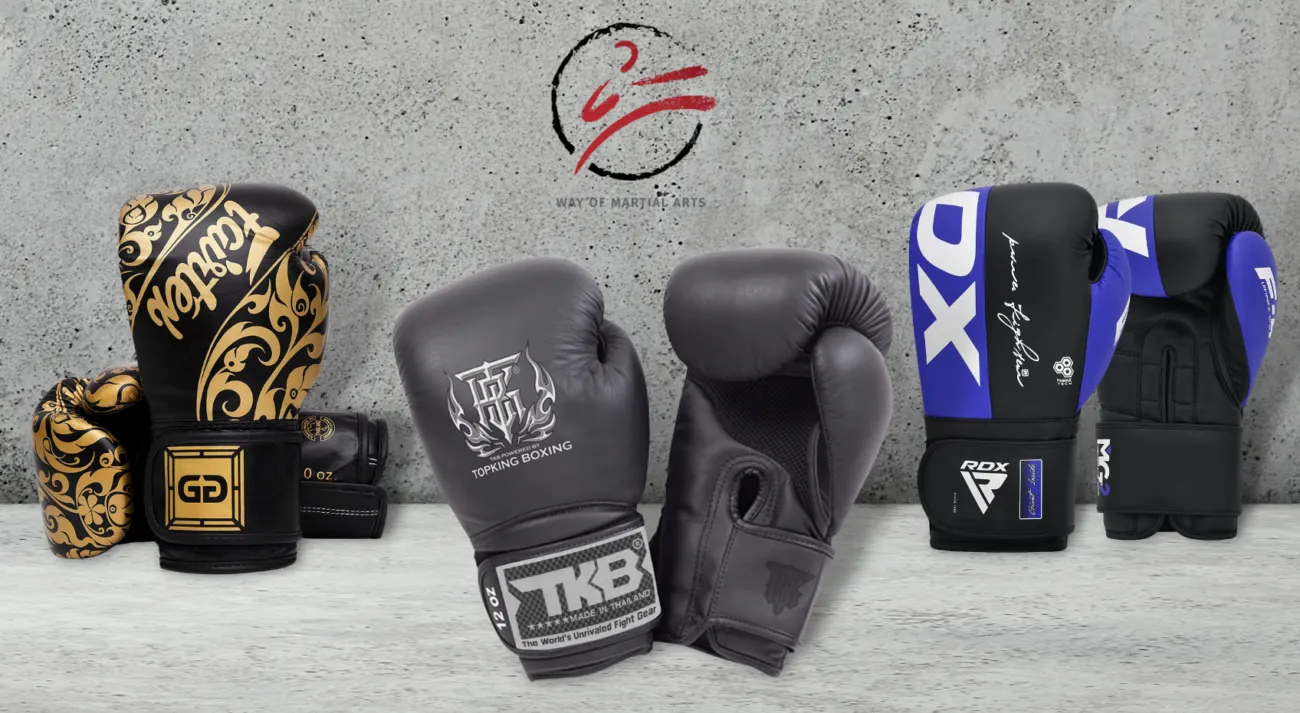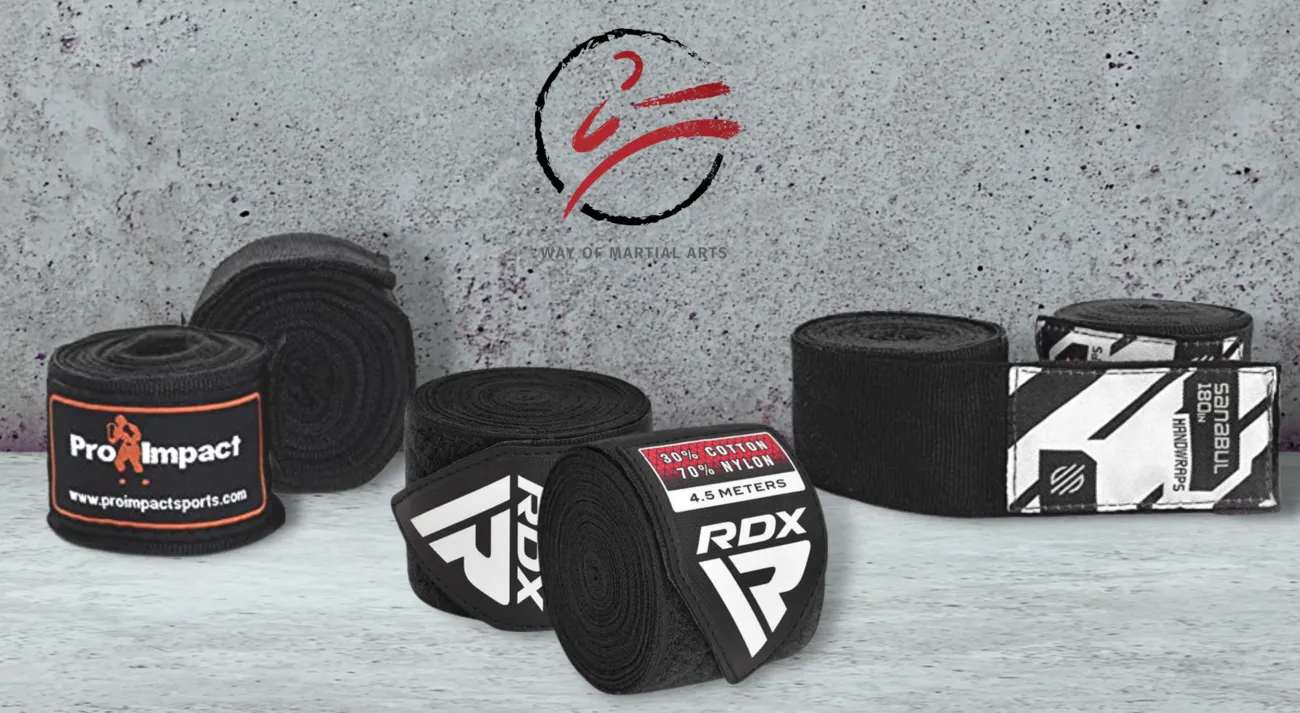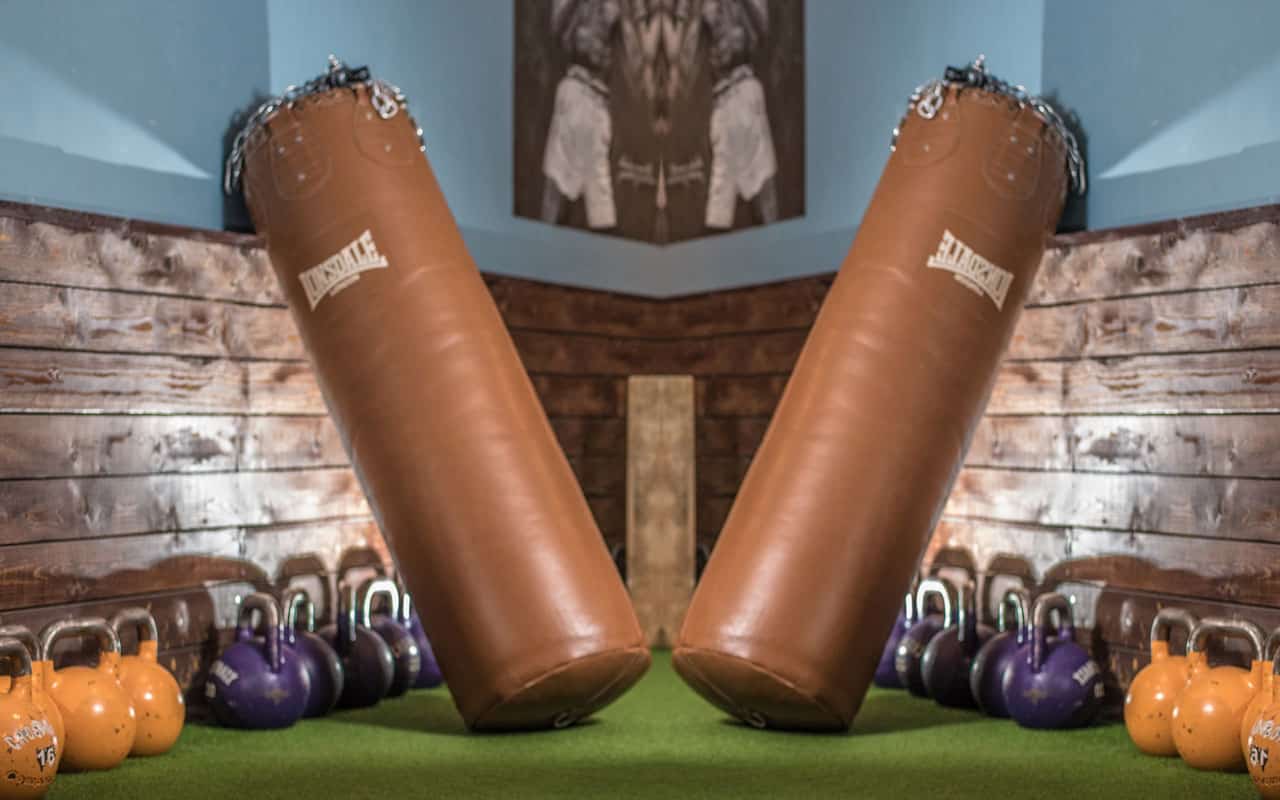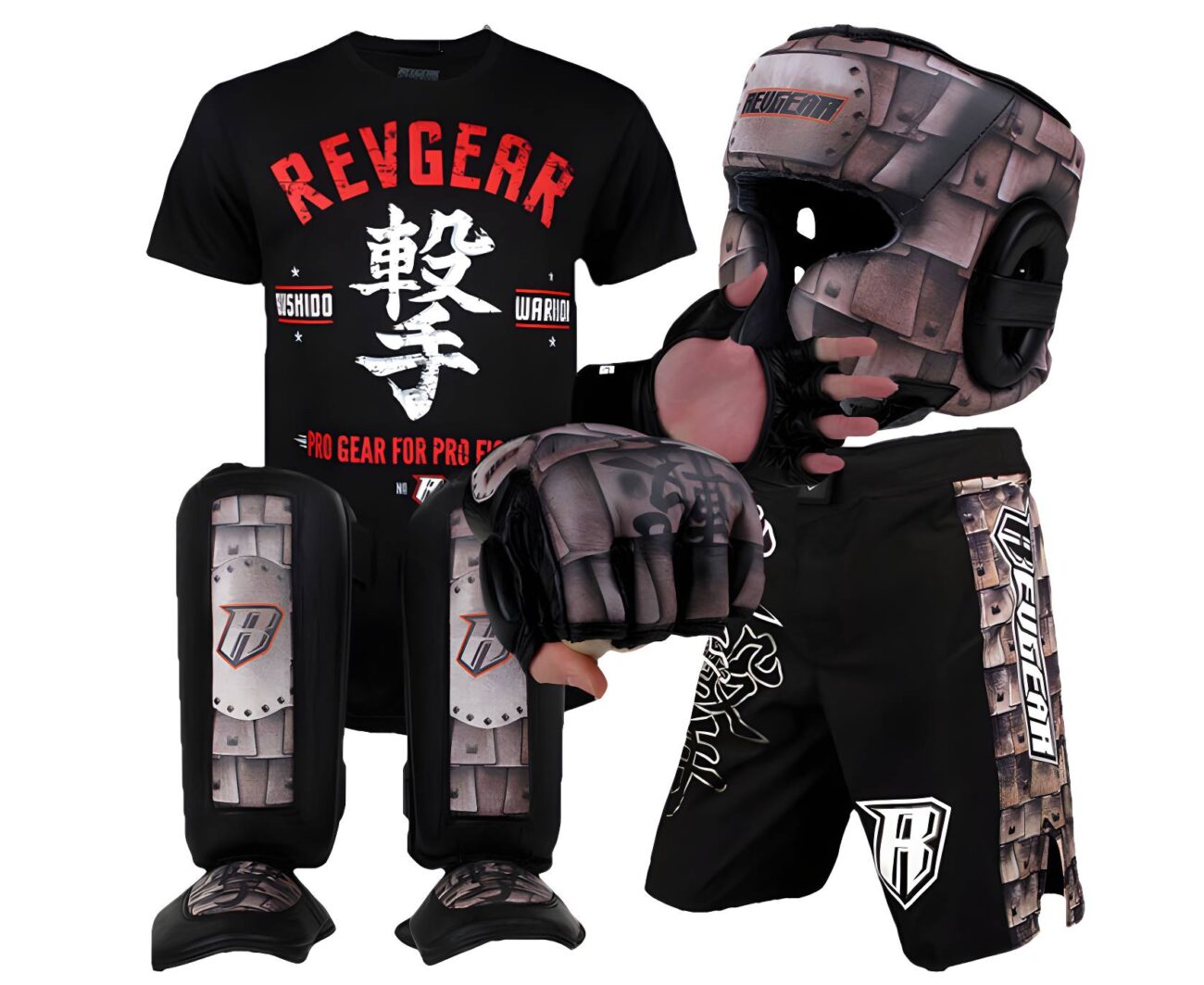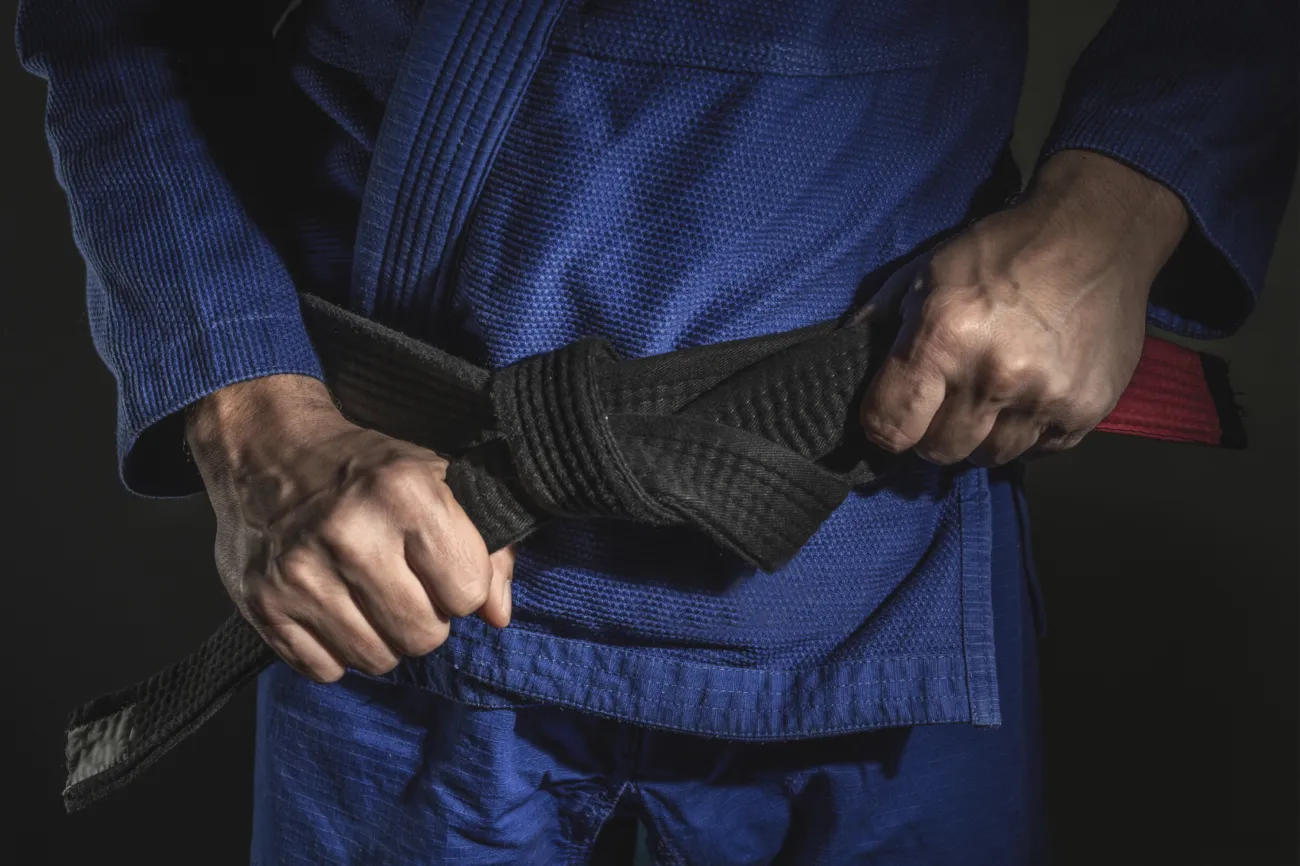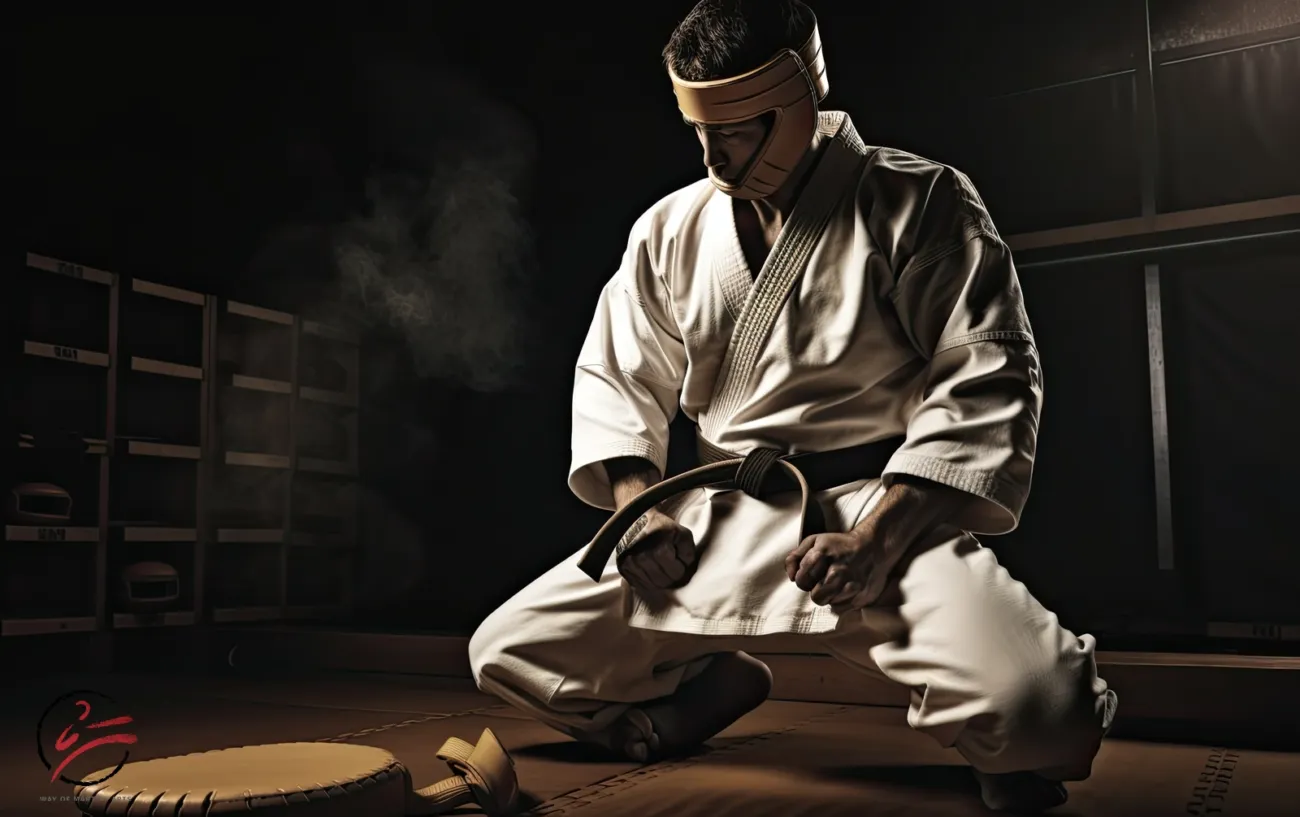Kickboxing is among the most popular martial arts globally, with millions of practitioners and various styles. Be that as it may, you’ll need practically the same equipment regardless of which style your choose to practice.
There is a similarity between kickboxing gear and training gear for Muay Thai, but Thai boxing demands more equipment as you must train elbows and knees.
Having all the equipment you need to perform at practice and in matches is imperative. It provides safety and allows you to develop your skills to the total capacity. Also, some equipment, like boxing gloves, is crucial for your opponent’s safety.
We’ll go through all the key equipment you’ll need for your kickboxing training (it can work for other martial arts too).
We’ll start with body equipment from most to least important and continue with other stuff you’ll need for practice. You can find most of the practice equipment in your kickboxing gym. But, having your items to train individually outside of your gym is always great.
Our Best Kickboxing Gear Reviews
- Best Kickboxing Gloves of 2023: Get the Ultimate Protection and Performance for Your Kickboxing Sessions!
- Best Kickboxing and Boxing Hand Wraps 2023: Protect your hand to Conquer the ring
- Best Kickboxing Shoes for Women: Conquer Every Fight with These Choices in 2024
- Best Heavy Bag Stand 2024: Reach New Heights in Training with the Best Stands You Can Find
- Best Kickboxing Shorts 2024 : Step into the Ring with Confidence
- Best Kickboxing Headgear that is worth your money: our verdict
- Be Unstoppable: The Best Punching Bags of 2023 for Your Training
Gloves
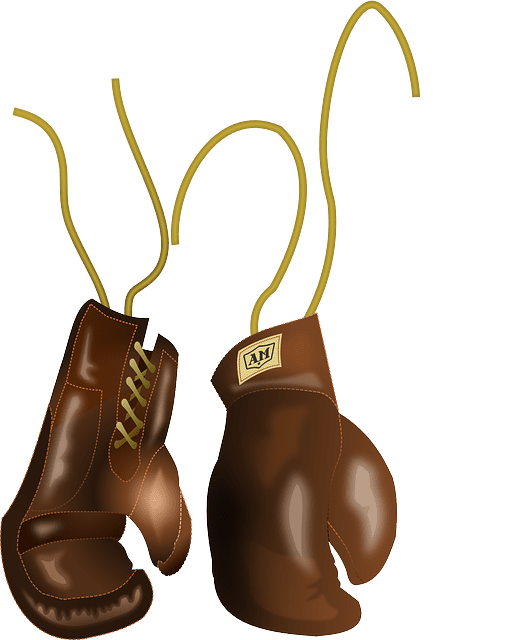
Kickboxing uses boxing gloves. The gloves have thick and tied around the wrist. The index finger, middle finger, ring finger, and pinky are joined, while the thumb has its compartment. A good boxing glove protects your hands from injuries, especially when hitting a heavy bag.
The weight of the boxing gloves depends on the rules under which the contestants are competing in. Most commonly, the fighters wear 8 oz boxing gloves in the featherweight and lower categories, while lightweight and heavier category fighters wear 10 oz boxing gloves. There are also 12-16 oz gloves and higher, typically used for training.
It can vary from competition to competition, and fighters can sometimes agree on a custom size, too (for example, it happens in Muay Thai combats). Both fighters must have the same size gloves to ensure identical conditions. Lighter gloves have a higher impact force due to having less padding. So, the thicker and heavier the gloves are, the lower the power is behind strikes.
It is hard to overstate the importance of suitable gloves in Kickboxing. Most strikes are delivered with maximum power and would be dangerous to use without gloves. Not only would that be dangerous for the rival, but you. Boxing gloves protect the sparring partner from severe cuts and blunt force trauma while also guarding you against damaging your knuckles, wrists, hand bones, and fingers.
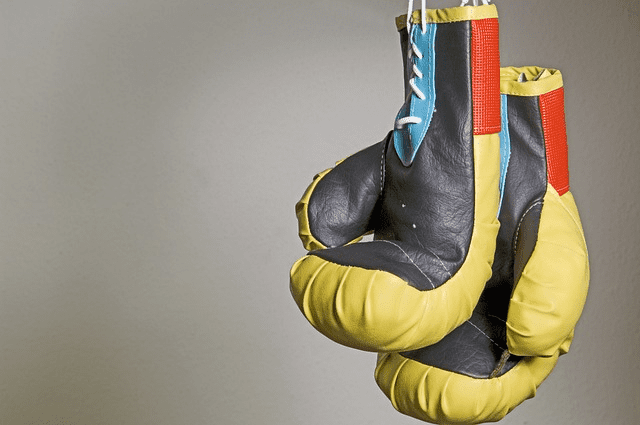
If you’re unsure which piece of boxing gloves to choose, we have a few suggestions you can’t go wrong with. Venum Challenger 2.0 gloves are trendy for their outstanding quality/price ratio. Many professional fighters use Venum gloves, and the Challenger 2.0 gloves are great for beginners and training purposes. They are made of high-quality leather and incredibly durable, which is great for high-intensity training, sparring, etc. You can check the price of gloves for boxing on Amazon.
Many other models can suit you well for training, such as Everlast Pro Style gloves, Ringside Pro-Style gloves, etc.
Hand Wraps (Bandages)
If gloves are crucial for your opponent’s safety, hand wraps – commonly known as bandages – are the most vital part of the equipment to protect your wrists, hands, and knuckles.
A hand wrap looks similar to a medical bandage and is put on similarly. It is an extra layer of protection against a punching bag. You wrap it around your wrist, hand, and the lower part of your forearm to ensure stability and security for your wrist.
Powerful strikes on a punching bag can cause your wrists to twist and get seriously injured. Even worse, the small bones in your hand may crack when you hit the sack, which is even more challenging to heal.
Do not even think about putting on your gloves and landing big bombs on a punching bag without having bandages under them. These lovely pieces of training equipment downgrade the level of stress on tiny finger muscles and tendons, which also decreases the possibility of an injury.
If you don’t know how to tie them properly or are still a beginner and have difficulty doing it, use models with a thumb strap to help you get started with wrapping, like Everlast Professional wraps, etc. Another great model to check out for heavy bag training and sparring is the Venum Boxing Hand Wraps, among others.
Competition wraps are made of gauze and tape; an exact prescribed amount is allowed. But they aren’t reusable, so the wrapping method is slightly different. That’s why they aren’t commonly used in training, too.
Mouthguard
Mouthguards are used in almost every martial art, including fighting competitions. Even Karate practitioners must use mouthguards, even though it is a light-contact, point-fighting sport.
Finding the model that fits perfectly wasn’t that simple, but that has changed with the development of boil-and-bite mouthguards. You put the product in hot water, and when it heats up, you take it out and bite into it. It makes a perfect mold for your teeth, so the mouthguard will be perfect.
There are many benefits and reasons why you should wear a mouthguard in Kickboxing, Karate, or any other martial art practice, especially if you plan on participating in sparring and competition.
First of all, your teeth will be protected from powerful impacts. A mouthguard distributes the force of every strike around your mouth and protects the teeth, preventing chips or teeth from getting knocked out. But it doesn’t mean there will be no bruises on your face.
Secondly, it protects your jaw and surrounding tissue, as well as it protects the teeth. The distribution of force helps to prevent dislocation and keeps all the joints in the right place.
The soft tissue in your mouth, such as your cheeks and tongue, will also be protected. A strike can cause your teeth to injure that soft tissue by biting or cutting. You can have a bloody, swollen face, but you won’t have to visit a dentist!
As mentioned, most models nowadays are made with boil-and-bite technology, so you don’t have to worry about the mouthguard fitting. Some of the most popular models for martial artists and other sportspeople in any contact sports are the Venum Challenger, SAFEJAWZ Slim Fit, and Shock Doctor Pro.
All three are boil-and-bite guards that guarantee a perfect fit. The difference between them is in shape, density, and size.
The SAFEJAWZ mouthguard is the slimmest out of the three, so it gives you a bit more breathing room than the others. But a slimmer mouthguard usually means less shock distribution, and it’s all about finding the perfect option for you personally.
Shorts
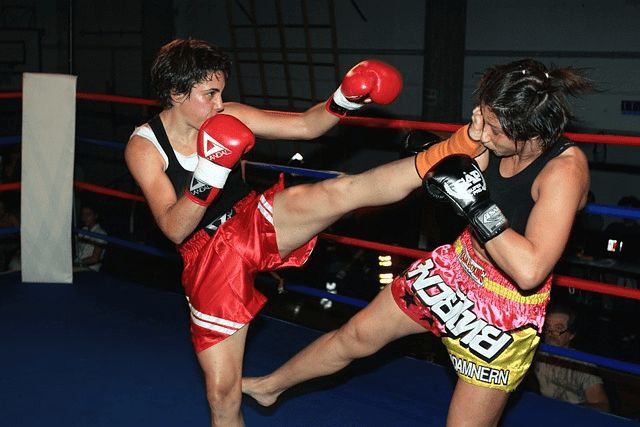
We won’t spend too much time on the shorts, as every fighter has their preferred option in that department.
Some fighters like to wear looser shorts; others find them disrupting when using their legs to score points. Some love the models with the legs cut on the sides for extra comfort, while others enjoy the compression shorts for practice and competition.
Ultimately, it will come down to what you prefer and feel the most comfortable in, so I suggest you check your local shop or order your favorite model online. Most organizations and promotions (both amateur and professional) allow only shorts as your choice of clothes.
However, some organizations and specific competitions will enable you to wear training pants in battle, such as WAKO competitions.
Groin Guard
As for the groin, the guard is a crucial part of your kickboxing equipment, regardless of whether you are a beginner or a professional, male or female. Although groin strikes are strictly prohibited in Kickboxing, a high frequency of low kicks, hip strikes, and body shots are the main reasons unintentional groin shots happen often. Even punches could land on the nards!
Also, kickboxing body kick or thigh kick is almost always mighty, which means the shots delivered to the groin area can cause severe injuries. That means you should be careful and wear a groin guard if you’re doing any sparring.
Imagine the ball of the foot to your family jewels while you stand and bang with your opponent… It’s painful. Even Karate and BJJ practitioners use groin guards, even though Karate is a light-contact sport, and BJJ involves no striking.
To determine what groin guard best fits you, you should know what variations of groin guards are available. Most groin guards for men are cup-based, while the ones for women are usually flat with extra padding – they are protecting around the most sensitive areas. A groin guard aims to distribute the blow’s force and amortize it so you feel the minimal impact.
First, the most common combination is the cup + compression shorts. These groin guards provide comfort and flexibility and enable you to move without interruptions. The cups come in various sizes and are carefully designed to fit and cover the entire groin area. The compression shorts usually have a special “pocket” where the cup fits to avoid moving around.
The best pick for this type of groin guard is the Diamond MMA groin guard (here is our review of the Diamond MMA cup). The cup’s unique design provides the best amortization of impact and protects you from even the most brutal blows. It is a bit more expensive than similar models but worth every penny. Another great option is the Shock Doctor Supporter + AirCore Hard Cup, which works on the same principle but is more affordable.
The second type of cup-based groin guard is the jockstrap + cup system. They are the same, but you’ll have a jockstrap that goes around your waist instead of compression shorts. You usually put it on like underwear. It’s also a great choice, but a bit less durable than the shorts system.
If you’re looking for a great model of this type, try out the lobloo 2.0 patented cup. It has incredible results when it comes to protection. The only setback is that the cup is small, so it might not fit every man. RDX Groin Protector is also a great alternative with excellent performance and comfort results, but it provides less protection than other models.
Finally, classic groin guards have much padding instead of a cup. They can be worn inside or outside your shorts and protect you significantly against groin injuries. However, the biggest drawback is their size.
The padding makes them a lot bigger, making them problematic in combat because they somewhat limit your movement – not drastically, but more so than cup-based systems. However, if you can find one that fits you perfectly, it can be incredible for practice and sparring. But I am warning you, a kick or a knee, even a foot, will create more damage!
Some popular models are Pro Impact Groin & Abdominal Protector, Ringside No Foul Protector (male & female), etc.
Shin Guards
Kickboxing shin guards are first used in training, but some amateur competitions also require them. Most leg strikes in Kickboxing are not performed with your foot like in Taekwondo or Karate, but with your shins.
It can be hazardous to start sparring without shin guards, especially if you are a beginner. Some rookies even hit the punching bag with shin protectors! It is so easy to hurt yourself!
Your shins won’t be used to that kind of impact initially. Even with great shin guards, you will feel the pain when you get hit with a hard low kick, especially if your foot touches your partners’ knee or thigh!
It’s always better to prevent an injury than heal it, and shin guards are crucial to make that happen in Kickboxing. They will allow your shins to get stronger gradually, and after some time in training, they will get adamant, and the impact won’t bother you anymore. It will also boost your confidence, while a severe fracture in the early stages of your fighting career could demoralize you badly!
That’s why you should start with thicker shin guards, work your way to thinner ones, and eventually fight without them. All professional competitions are fought without shin guards, but if you are a beginner, you need them to get through any training – even bag striking.
Some of the best beginner models are Venum Kontact Shin and Instep Guards or RDX Shin + Instep Guards. We have reviewed Venum Kontact Shin Guards entirely, so check it out before buying. They provide ample padding and protection but don’t limit your movement or performance. If you opt for a different model, ensure you get kickboxing shin guards with instep padding because other guards are used for various purposes, such as wrestling shin guards.
Ankle Pads
Some fighters use ankle bandages to provide protection, similar to hand bandages. If you think your ankles are injury-prone or want to give yourself an extra safety net to avoid foot injury, this is a great way. Especially if you are a beginner and don’t have that great technique in your leg strikes – poor exercise technique is the most common reason for leg and arm injuries in Kickboxing.
Beginners tend to kick their opponents with the foot, leading to severe injuries. Foot techniques are standard for Taekwondo but horrible for Kickboxing, as the opponent could check your kick and even break your leg while countering your kick.
Also, having headgear (fighting helmet) in your arsenal is never a bad idea, especially for boxing training. It’ll give you extra protection and allow you to exercise freely and to the fullest of your capabilities.
Training Equipment
We’ve covered everything you’ll need regarding body equipment, but there are still some critical things for training and exercise.
Most of the stuff will be available to you in your gym, but if you want to go the extra mile and train at home as well, you can buy and use that same equipment for home training, too (punching bag to make your arms more skillful, for example). We won’t mention every equipment used in a kickboxing workout – only the key ones.
Punching Bag
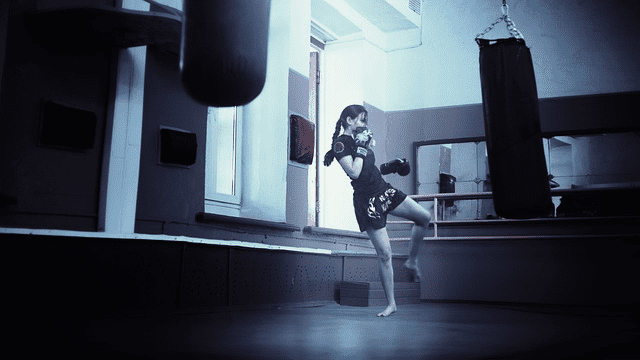
First and foremost, there is no kickboxing training without a punching bag and pads (mitts). The bag work is an integral part of every workout session. It helps you work on individual strikes and perfect the technique of each shot you take. You can even install one heavy bag at your home. 🙂
You’ll also work on your cardio and combinations. The bag’s weight and thickness will determine the workout’s intensity. Beginners start on softer, lighter punching bags and work up to the more complex types.
Another integral part of the boxing-kickboxing exercise is the “bulb” punching bag, also known as the “pear.” It is a small bag with a spring that helps you work on timing, speed, precision, and hand-to-eye coordination because it’s a smaller target. Experts even use it for foot, elbow, and knee strikes.
Striking
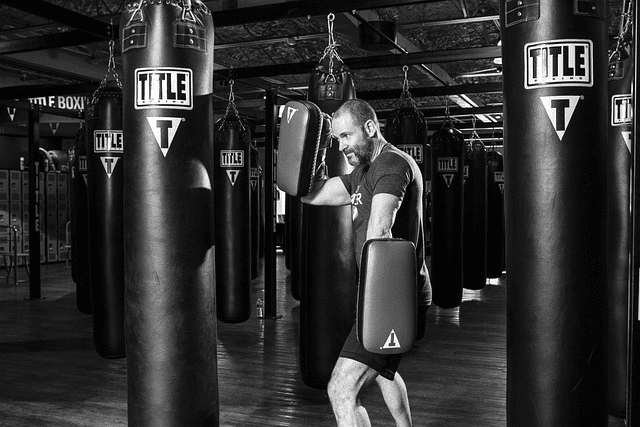
Striking pads (focusers, mitts) come in various types, shapes, and sizes, but all help with the same thing: polishing your unique power, precision, and evasive maneuvers. Pad work will help you understand how to deliver combinations to the moving target while considering that your opponent will also strike back.
It’s essential to know how to get your boxing offense going, but combine that with evading and defending from opponent attacks. The only “problem” is that you need another person to help you and hold the mitts, which aren’t helpful if you don’t have anybody to help you exercise with them.
Gym equipment is also essential to maximize your potential in Kickboxing. However, you shouldn’t invest in these if you have them in your gym because they can be costly. Nevertheless, knowing what they are and how to use them is good.
Dumbbells And Bench Presses
Dumbbells and bench presses are something that will often be used in practice. To perform Kickboxing, you have to be in great physical shape. You should also become a cardio beast, ready and built for the toughest challenges. Weightlifting will be pretty handy to get there, and you’ll get stronger and improve your endurance.
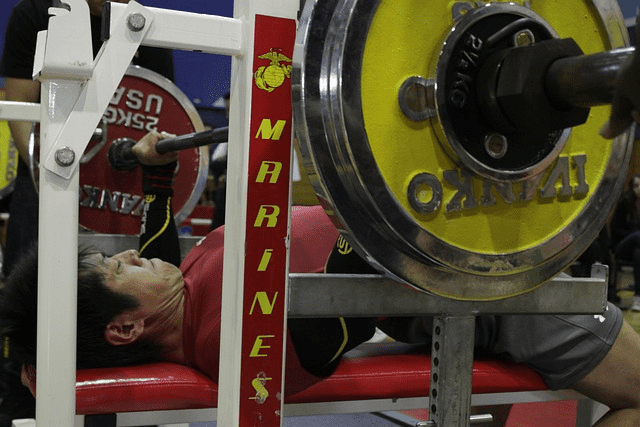
Something that you can easily mount at home and have huge benefits from it is a pull-up bar. You’ll use your body weight for training, and you can use the bar to work on your entire body effectively.
If you’re a beginner or a pro, these are the main things you’ll need for kickboxing training. Talk to somebody with more experience (it would be best to consult your coach) before making any purchases, especially when starting with Kickboxing. These training tools can come in handy for boxing workouts too!
Frequently asked questions about Kickboxing equipment
What gear is needed for Kickboxing?
The basic gear includes boxing gloves, a heavy bag, hand wraps, groin guards, a mouthpiece, and shin guards. Optionally, you can protect your feet from injuries via ankle pads and buy different bags in the store (for example, a speed bag or a teardrop).
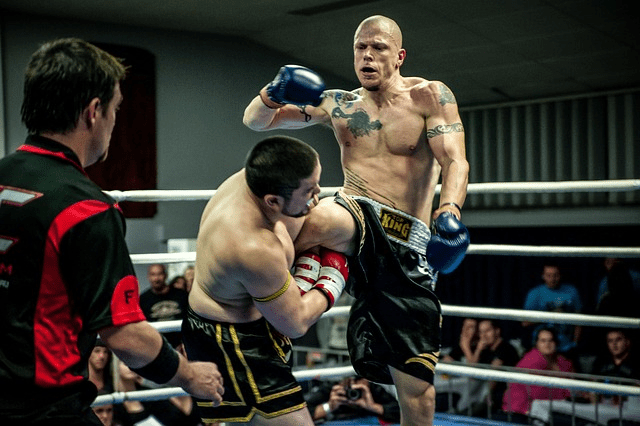
What do kickboxers wear?
Kickboxers wear boxing gloves, a groin cup, a mouthpiece, and shorts in the competition.
Are two days a week enough for Kickboxing?
If you plan to compete professionally, there is no way. Yet, if you’d like to train for health and fun, two sessions should be fine.
What do you need for beginner kickboxing?
A beginner will need a pair of shorts and boxing gloves. But if you plan to stay in sports for longer, please buy a mouthpiece and groin cup in the shop.
Can you do Kickboxing at home?
Yes, but your options are limited. You will need an area to train; nobody can correct your mistakes. Having a family member who can hold your boxing mitts would be awesome.
How can I practice Kickboxing at home without equipment?
You can focus on shadow kickboxing; there are tons of videos available. Furthermore, you can install a mirror and work on your balance, watch your feet, improve your stance, and fix your mistakes.
Can you self-teach Kickboxing?
You can, to some point. But even the greatest fighters and the best technicians worldwide have sparring partners, coaches, or somebody to hold the target. Your progress will be limited; you can’t just swing into the air and progress.

